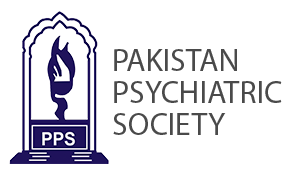DISORDERED EATING BEHAVIORS: AN OVERVIEW OF ASIAN CULTURES
Abstract
Disordered eating refers to troublesome eating patterns that are less frequent or less severe than diagnosed eating disorders. The difference between disordered eating and occasional disruption of normal eating patterns is the urgency and the persistence behind the eating behavior. Review of recent researches showed that disordered eating or atypical eating disorder is far more common and widespread than actual eating disorders. A survey of recent research literature shows an alarming rise in eating disorders in South Asian and Islamic countries. The aim of this paper is to highlight disordered eating behaviors in people of Asian cultures especially Pakistan.
Downloads
References
2. Russell G. Bulimia nervosa: an ominous variant of anorexia nervosa. Psychol Med 1979; 9: 429-48.
3. Palmer RL. The dietary chaos syndrome: a useful new term? Br J Med Psychol 1979; 52: 187-90.
4. Abraham SF , Mira M , Beumont PJ ,Sowerbutts TD, Llewellyn JD. Eating behaviors among young women. Med J Aust 1983; 2: 225-8.
5. Kagan DM, Squires RL. Eating disorders among adolescents: patterns and prevalence. Adolescence 1984; 19: 15-29.
6. Polivy J, Herman PC. Causes of eating disorders. Ann Rev Psychol 2002; 53: 187-213.
7. Sanftner JL, Crowther JH, Crawford PA, Watts DD. Maternal influences (or lack thereof) on daughters’ eating attitudes and behaviors. Eat
Disord: J Treat Prevent1996; 4: 147–59.
8. Cooper L, Fairburn C. The eating disorder examination: a semi-structured interview for the assessment of the specific pathology of eating
disorders. Int J Eat Disord 1987; 6: 1-8.
9. Johnson MD, Powers T, Dick H. Disordered eating in active and athletic women. Clin Sports Med 1994; 13: 355-69.
10. Johnson MD, Powers T, Dick H. Disordered eating in active and athletic women. Clin Sports Med 1994; 13: 355-69.
11. Gatenby SJ. Eating frequency: methodological and dietary aspects. Br J Nutr 1997; 77: S7-20.
12. Hesse-Biber S. Eating patterns and disordered in a college population: Are college women’s eating problems a new phenomenon? Sex Roles
1989; 20: 71-89.
13. Kalodner CR, Scarano GM. A continuum of non clinical eating disorders: A review of behavioral and psychological correlates and
suggestions for intervention. J Ment Health Counsel 1992; 14: 30-41.
14. American Psychiatric Association. Diagnostic and statistical manual of mental disorders. 4th ed TR. Washing ton DC: American Psychiatric
Association 2002.
15. Fairburn CG, Garner D. Studies of epidemiology of bulimia nervosa: an undetected problem. Br J Psychiatry 1986; 147: 401–8.
16. Nasser M. Screening for abnormal eating attitudes in a population of Egyptian secondary school girls. Soc Psychiatr Psychiatr Epidemiol
1994; 29: 25-30.
17. Lee S. How abnormal is the desire for slimness? A survey of eating attitudes and behaviour among Chinese undergraduates in Hong Kong.
Psychol Med 1993; 23: 437-51.
18. Buhrich N. Frequency of presentation of anorexia nervosa in Malaysia. Aust NZ J Psychiatry 1981; 15: 153-5.
19. Lee S. Anorexia nervosa in Hong Kong: a Chinese perspective. Psychol Med 1991; 21:703-11.
20. Kuboki T, Nomura S, Ide M, Suematsu H, Araki S. Epidemiological data on anorexia nervosa in Japan. Psychiatry Res 1996; 62: 11-6.
21. Nobakht M, Dezhkam M. An epidemiological study of eating disorders in Iran. Int J Eat Disord 2000; 28: 265-71.
22. Ung EK, Lee S, Kua EH. Anorexia nervosa and bulimia— a Singapore perspective. Singapore Med J 1997; 38: 332-5.
23. Kiriike N, Nagata T, Sirata K, Yamamoto N. Are young women in Japan at high risk for eating disorders? Decreased BMI in young females
from 1960 to 1995. Psychiatry Clin Neurosci 1998; 52: 279-81.
24. Suzuki K, Takeda A, Matsushita S. Co prevalence of bulimia with alcohol abuse and smoking among Japanese male and female high school
students. Addiction 1995; 90: 971-5.
25. Nakamura K, Hoshino Y, Watanabe A, Honda K, Niwa S, Tominaga K, et al. Eating problems in female Japanese high school students: a
prevalence study. Int J Eat Disord 1997; 26: 91-5.
26. Babar N, Alam M, Ali SS, Ansari A, Atiq M, Awais A, et al. Anorexic behavior and attitudes among female medical and nursing students at a
private university hospital. J Pak Med Assoc 2002; 52:272-5.
27. Tylka TL, Subich LM. A preliminary investigation of the eating disorders continuum with men. J Counsel Psychol 2002: 49: 273-9.
28. Garner DM. Eating Disorder Inventory-2: professional manual. Odessa, FL: Psychological Assessment Resources, Inc, 1991.
29. Mumford DB, Whitehouse AM, Choudry IY. Survey of eating disorders in English medium schools in Lahore, Pakistan. Int J Eat Disord 1992;
11: 173–84.
30. Kaiser F, Syed A, Qazi A. Association of anorexia nervosa with depression. Rawal Med J 2007; 32: 77-9.
31. Suhail K, Nisa Z. Prevalence of eating disorders in Pakistan: relationship with depression and body shape. Eat Weight Disord 2002; 7: 131-8.
32. Safdar NF. Thinness: a woman’s conflict or Eating Disorders: Facts and the Search for Solutions. J Pak Med Assoc 2006; 56,345-6.
33. Rehman T, Rizvi Z, Siddiqui U, Ahmad S, Sophie A, Siddiqui M, et al. Obesity in Adolescents of Pakistan. J Pak Med Assoc 2003; 53: 35-40.
Copyright © JPPS. Published by Pakistan Psychiatric Society
Licensing: This work is licensed under Creative Commons Attribution-NonCommercial 4.0 International License
Readers may “Share-copy and redistribute the material in any medium or format” and “Adapt-remix, transform, and build upon the material”. The readers must give appropriate credit to the source of the material and indicate if changes were made to the material. Readers may not use the material for commercial purposes. The readers may not apply legal terms or technological measures that legally restrict others from doing anything the license permits.






.png)









